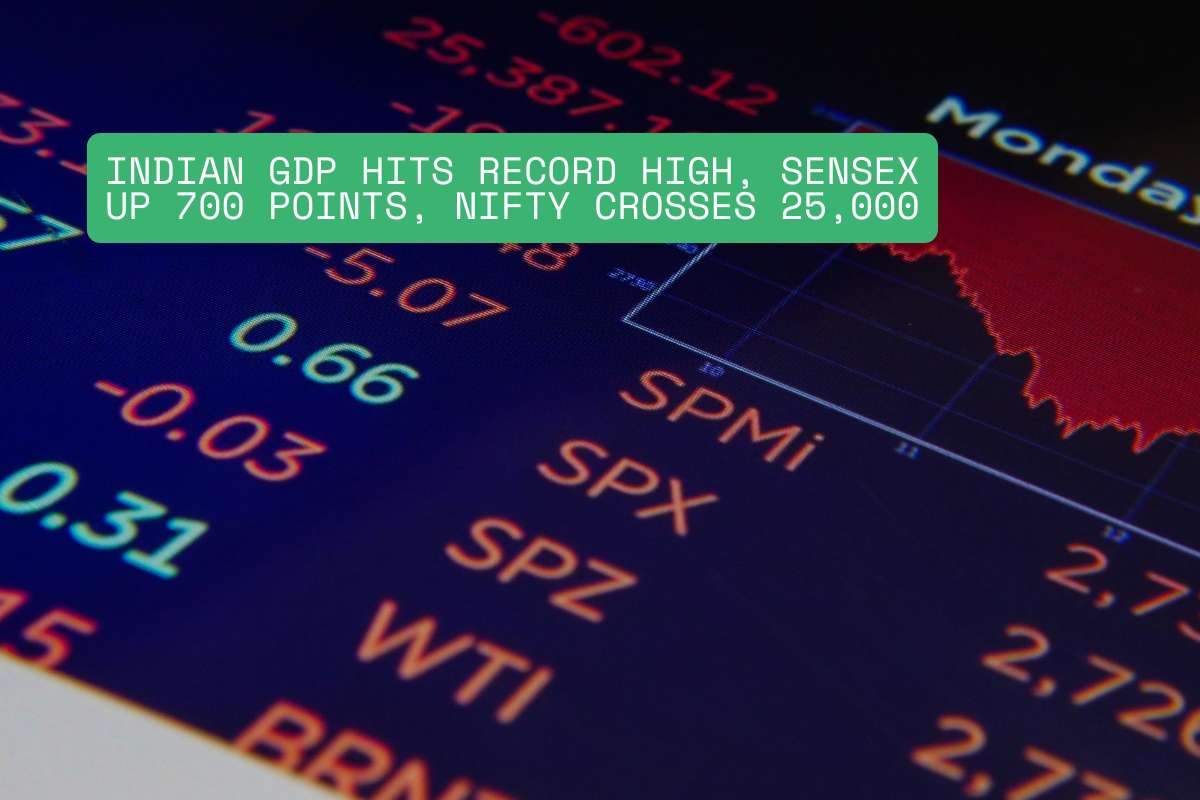The Indian stock market opened strongly on Monday as both benchmark indices hit fresh record highs. The BSE Sensex jumped over 700 points while the NSE Nifty crossed the 25,000 mark for the first time in history, supported by India’s robust GDP growth, strong global cues, and heavy buying in key sectors.
By 10:00 AM, the Sensex was up 735 points at 82,456.36, and the Nifty 50 gained 208 points to trade at 25,061.25. This rally reflects investor confidence in the Indian economy, especially after the latest GDP data showed record growth, giving a big boost to market sentiment.
Why the Market Is Rising?
Strong economic data mainly drive the sharp jump in the stock market. India’s GDP has reached an all-time high, signaling a strong recovery and economic momentum. Both domestic and foreign investors welcomed this news.
Apart from domestic data, global developments also supported the rally. U.S. President Donald Trump postponed the 50% tariffs on EU goods, reducing global trade tension and helping emerging markets like India. Additionally, the Reserve Bank of India transferred a record INR 2.69 trillion dividend to the government, which is expected to support the fiscal deficit and boost spending.
Sector-wise Performance
Almost all sectors traded in the green. Metal, realty, auto, and energy stocks saw strong buying, rising over 1%. Financial stocks also moved higher, with HDFC Bank, ICICI Bank, and Reliance Industries leading the gains.
Analysts say that if this positive momentum continues, Nifty may touch new levels in the coming weeks. Strong GDP numbers, stable inflation, and healthy foreign inflows are expected to support the market rally further.
Summary
- Sensex rose 735 points to 82,456.36
- Nifty crossed 25,000 for the first time, hitting 25,061.25
- Strong GDP growth, RBI dividend, and global cues helped boost investor sentiment
- Metals, auto, and financials led the rally
The Indian stock market’s historic rise reflects growing optimism about the country’s economic future, driven by solid fundamentals and supportive global signals.



